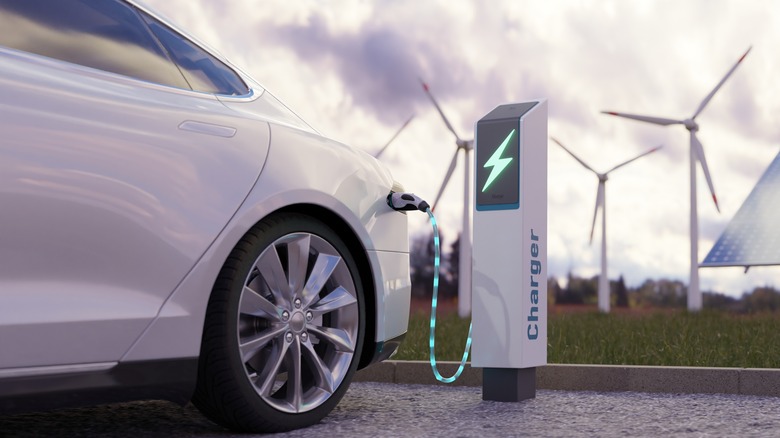
Blackcat/Getty Images
Electric vehicles (EVs) are on the rise, with practically every automotive company investing in a cleaner energy alternative. Unfortunately, that means parts like fuel tanks, pumps, and tailpipes are becoming a relic of the past, but the switch to EVs may mark the end of one car part as we know it: multi-speed transmissions. Now, everyone knows manually shifting gears already had one foot out the door, but EVs may be the final nail in the coffin.
Electric vehicles use a single-speed transmission, meaning there’s only one gear to use: on. When you sit down in an EV for the first time, you’ll notice something is off with the gear shift, especially if you’re used to driving around with a manual transmission. Instead, you’ll only see the standard Park, Reverse, Neutral, and Drive. It’s like an automatic transmission without the extra gears that most people don’t understand. Some companies have attempted to bring the traditional transmission feel to their EVs, with Hyundai introducing the N E-Shift to the Ioniq 5 N and Toyota’s new EV offering a simulated manual transmission. But at the end of the day, those are both still the standard EV single transmission. However, that raises the question: how do transmissions work in electric cars?
How do EV transmissions work?

Markopolo/Shutterstock
With a traditional combustion engine, you have to build up torque over time, with your transmission switching gears to achieve higher levels of power. That’s not the case with electric vehicles. EVs instantaneously produce a constant amount of torque, directly distributing that power to the wheels.
When you step on the accelerator, the EV’s battery sends electricity to the electric motor. The motor then spins the single-speed transmission, and as they spin together, the motor and transmission work in tandem to push the EV forward. When you’re going in reverse, the spinning motor spins backward, eliminating the need for an actual reverse gear. To put these spins in perspective, an internal combustion engine generates up to 7,000 rpm, while an electric motor can rotate up to 20,000 rpm. That’s why EVs accelerate profoundly faster than cars with combustion engines, as they can access the motor’s top power as soon as you step on the gas pedal.
It’s worth mentioning that this isn’t the case with every EV. Toyota’s fake manual transmission works differently, while hybrids use a more traditional transmission because they combine electric motors and combustion engines. Both of those and those previously mentioned are great alternatives for those who yearn for that classic transmission feel but want to lower their carbon footprint.